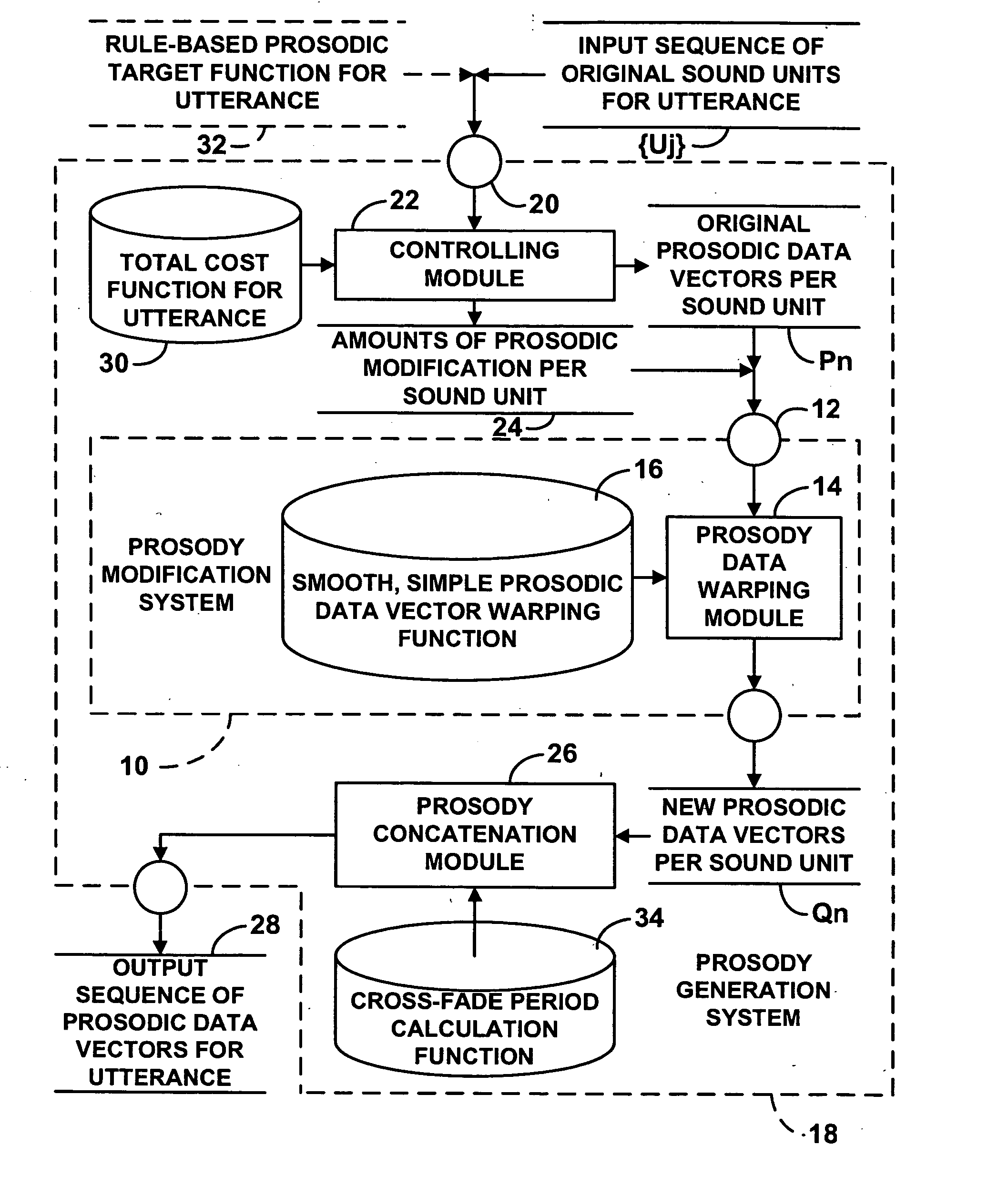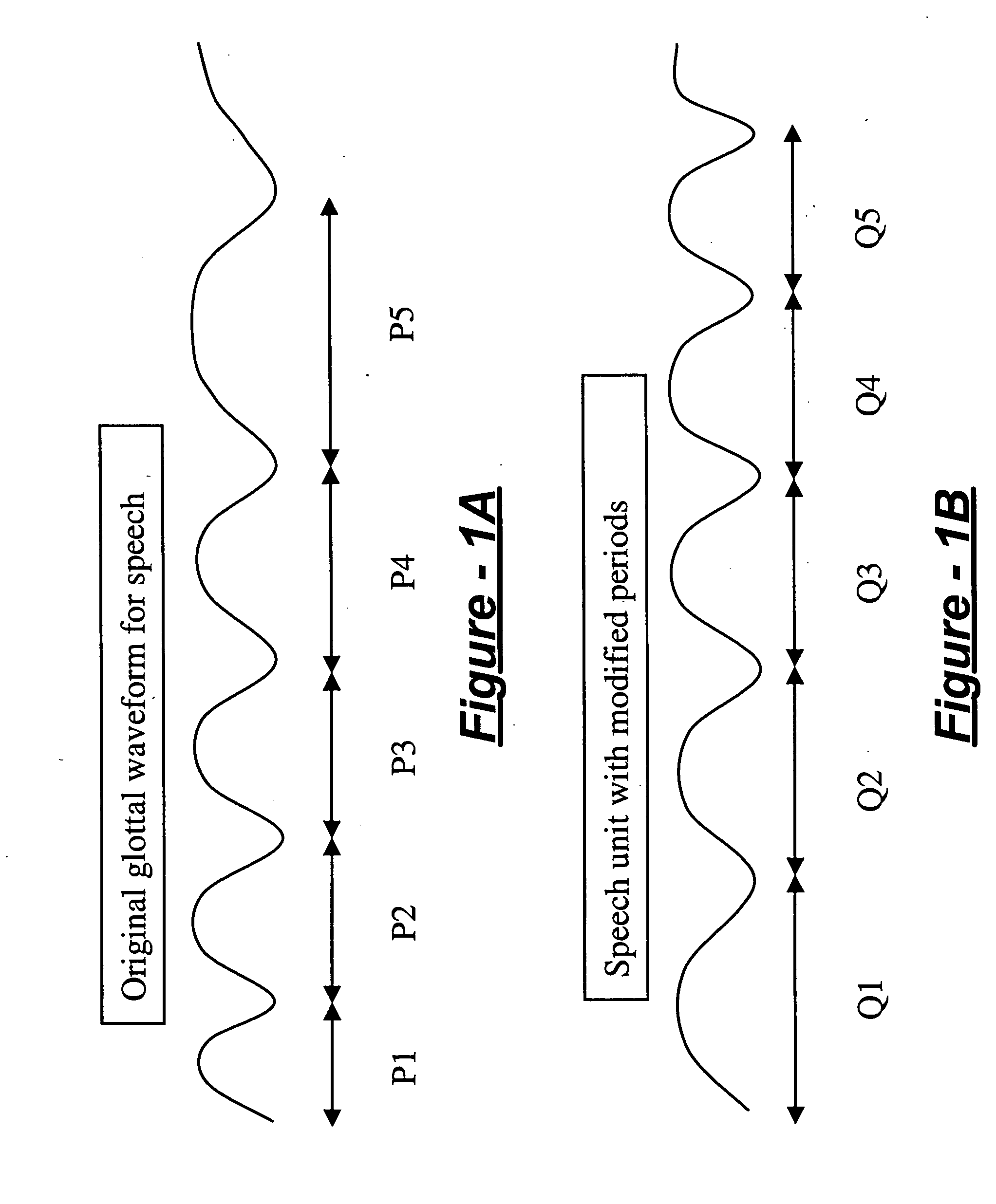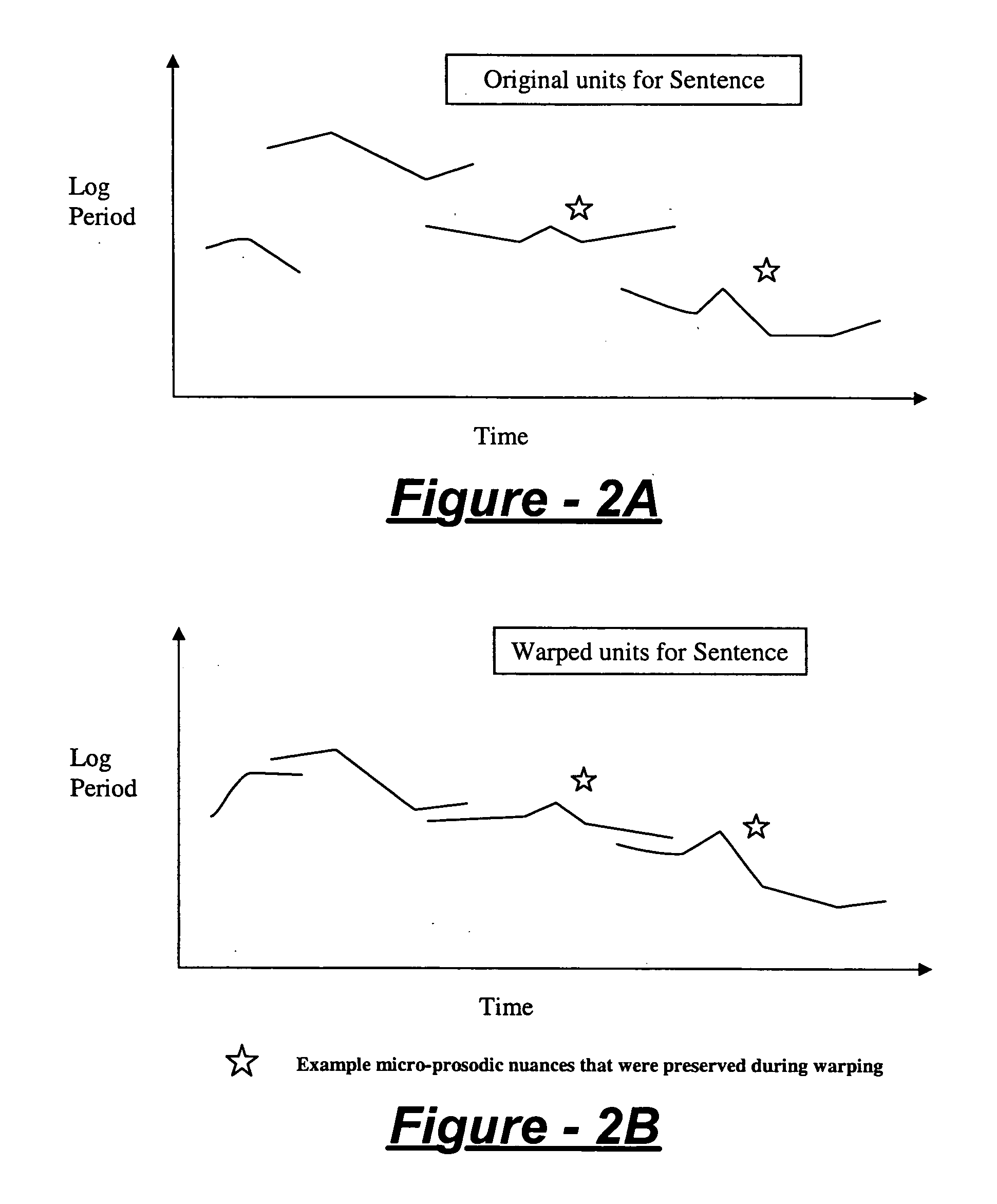Prosody generation for text-to-speech synthesis based on micro-prosodic data
a technology of text-to-speech synthesis and micro-prosodic data, applied in the field of text-to-speech systems and methods, can solve the problems of difficult handling, most difficult part of speech synthesis, and inability to know where the nth pulse is, so as to avoid round-off errors, low complexity, and high complexity
- Summary
- Abstract
- Description
- Claims
- Application Information
AI Technical Summary
Benefits of technology
Problems solved by technology
Method used
Image
Examples
Embodiment Construction
[0028] The following description of the preferred embodiment(s) is merely exemplary in nature and is in no way intended to limit the invention, its application, or uses.
[0029] The present invention reduces distortion caused by prosodic modification, including the loss of naturalness and speaker identity, without increasing size. The inventive system and method of prosodic modification addresses the above mentioned distortions simultaneously, thus giving a less distorted and more natural sound. The prosody generation system and method can be applied with only the data from a diphone database, and hence need not increase the size of a diphone synthesizer.
[0030] The prosody modification method of the present invention takes as input some representation of a sound waveform. It also may take as input, a target pitch function of time, a target loudness function, and a target timing (or time warping) function. The output is an actual waveform, or the information for producing such a wave...
PUM
 Login to View More
Login to View More Abstract
Description
Claims
Application Information
 Login to View More
Login to View More - R&D
- Intellectual Property
- Life Sciences
- Materials
- Tech Scout
- Unparalleled Data Quality
- Higher Quality Content
- 60% Fewer Hallucinations
Browse by: Latest US Patents, China's latest patents, Technical Efficacy Thesaurus, Application Domain, Technology Topic, Popular Technical Reports.
© 2025 PatSnap. All rights reserved.Legal|Privacy policy|Modern Slavery Act Transparency Statement|Sitemap|About US| Contact US: help@patsnap.com



